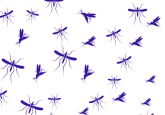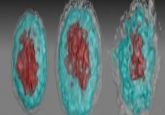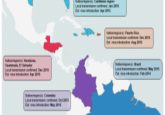Mechanism of Zika neurological complications revealed

Brazilian research groups collaborate to uncover a correlation between high levels of Gas6 protein and the neurological complications of Zika virus infection.
The study was a collaboration between Brazilian researchers from several groups whose leaders include José Luiz Proença, Fábio Trindade Maranhão Costa (both University of Campinas’s Institute of Biology; São Paulo, Brazil) and Jean Pierre Schatzmann Peron (University of São Paulo’s Biomedical Sciences Institute; Brazil). Singapore’s A*STAR Infectious Diseases Labs also collaborated in the study. Modena’s group used ELISA immunoassays to analyze the levels of Gas6 protein in Zika patient blood serum samples whilst Peron’s group conducted animal trials. The findings demonstrated that higher levels of Gas6 protein correlated with neurological complications after Zika virus infection.
Zika first became a public health hazard in 2015 after the virus spread from South America to more than 94 countries. A staggering 214,000 probable cases of Zika were reported in Brazil in 2016. The virus is still prevalent today with 2,006 probable cases reported from January–May 2021, according to the Brazilian Ministry of Health. Zika infection is usually asymptomatic in adults; however, recent research indicates a link between Zika and later development of neurological complications such as Guillain-Barré syndrome, encephalitis, meningitis and a congenital malformation known as microcephaly in infants.
The virus triggers an increase in production of Gas6 protein by peripheral monocytes, a type of white blood cell, causing suppression of the inflammatory response and facilitating viral infection. “High levels of the protein are associated with an increase in suppressor of cytokine signaling 1 [SOCS-1], a potent inhibitor of type 1 interferon (IFN1). The more potent the mechanism, the worse the prognosis,” Modena explained.
Ninety patients and 13 healthy controls were enrolled in the study. After ELISA immunoassay analysis of blood serum samples, the researchers found that patients who developed neurological complications after Zika infection had higher levels of Gas6 and SOCS-1.
Peron’s group tested the outcome of Zika infection with and without Gas6 in immunocompetent mice. “We inoculated the virus with and without Gas6 into pregnant and non-pregnant mice. Viral load on the first day after infection was much higher in the adult mice that received the virus with Gas6, showing that the protein favors infection. A high proportion of their offspring had congenital malformations, with smaller heads and lower overall size,” Lilian Gomes de Oliveira (University of Campinas), joint first author of the article explained.
The researchers also conducted in vitro testing of warfarin as a potential treatment for Zika as the drug can reduce the effectivity of Gas6 to help prevent viral replication. “By deciphering this mechanism, we’ve opened up the possibility of further research that could serve as a basis for intervention with drugs […] We didn’t conduct a clinical trial, but the door is open,” Modena said.
The team’s findings ultimately improved the current understanding of Zika pathogenesis and provides basis to investigate Gas6 as an antiviral therapeutic tool for severe Zika infection.





